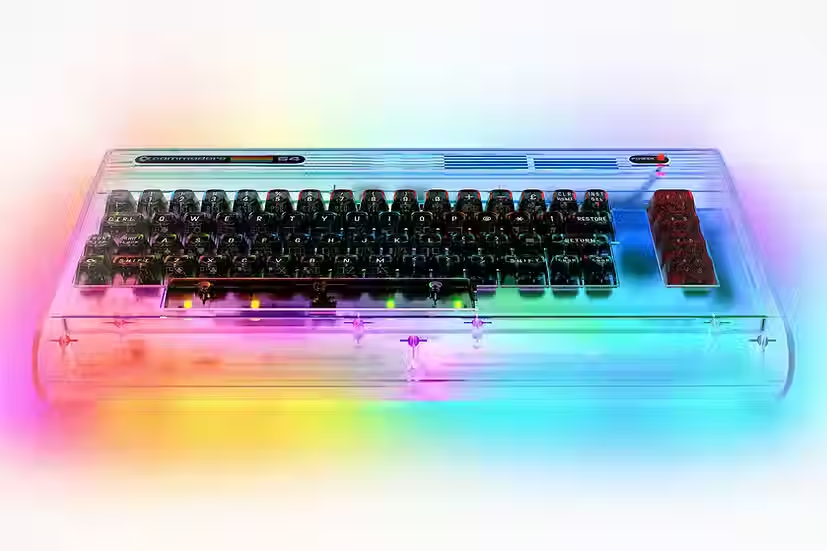Commodore 64: To “C” or not to “C”- that is the question.
- Mark
- May 26, 2022
- 3 min read
Updated: Sep 19, 2022
Recently, I wrote a post about the classic SID chips and this has got me thinking about the two machines that host them. The “Breadbin” (or Breadbox as our American friends call it) of course is the original 6581 classic and the “C” the 8580 newer, revised chip. (Most Commodore 128's as well had the 8580 but not all).
This got me thinking however about other differences between the two versions of the C64 and so I figured, why not look into them in today's post. At AMI64, I am the lucky man responsible for doing the repairs (among other tasks) and so over the years I've accrued a fair bit of knowledge of the two machines and more notably, their differences.
From the outside we all know the classic looks (beige, chunky bread holder and creamy, slim lined sex kitten) but of the two machines, “under their hoods”, there are a lot more differences than you might think. Commodore didn't just change the case design and pop on a different coloured keyboard. What they did was to get the entire motherboard and chipset redesigned from the ground up. Besides reducing the number of chips on board, they also reduced heat issues, decreased some voltages (the SID reduced from 9 to 12 volts) and improved overall stability. (That's not to say the original was unstable – just that, by re engineering the motherboard's chipsets, they reduced the likelihood of failure).
So, how was the “C” an improvement?
First, some of the computer's original features were combined. The eight RAM chips of the original were reduced down to just two in the newer “C”. (A Godsend to us poor guys who do repairs!).
Second, the separate BASIC, kernal and character ROM chips were reduced to just two. (by using larger ROM chips). That's one less chip to fail.
Third, (and this is the big one!), the original “Breadbin'' had complicated circuitry (and many chips) for the oscillation and memory mapping. In the “C” this was again reduced down to much fewer components and thus less likely to fail. (and also cheaper to manufacture of course!)
Next, the “CIA” chips that control keyboard commands, joysticks, serial ports etc.. were replaced with faster, more capable chips (again, improving reliability and stability along with a newer more capable CPU).

The major improvement however was in the 64C's so called “Super PLA”, which replaced the (somewhat buggy) and in all cases “sensitive” PLA. The PLA (along with CPU, SID and VIC chip) are really the heart and soul of what makes this machine the machine we all love and cherish but the original “Breadbin” PLA is prone to overheating and at around forty years old now if it hasn't failed yet, it surely is only a matter of time that it will do so. The “Super PLA” then combines all of the functions of the original PLA along with colour RAM and a lot of the so-called “glue logic” that makes that machine function. The PLA in the “C” runs much cooler than Commodore's original and I have only ever seen one fail. (This is in contrast to the “Breadbin” which at any time I am sent a repair to do, my first thoughts are to check the PLA). I literally have lost count of the amount of original PLA's I have had to replace!
Of course, if you don't own a newer “C” model, all is not lost. At AMI64 we do make our own brand new PLA chips for “Breadbins” and they run nice and cool of course.
One final change worth also noting is the VIC chip was redesigned to be a lot more sturdy (although in all honesty, I rarely find issues with either of the two revisions).
Well, in conclusion then. Should you buy a “C” or regular “Breadbin”?
Well. when buying from AMI64, it won't make a lot of difference, and I'd recommend going for the one that feels right for you. All our machines are refurbished, repaired and tested, so if failures occur you can rely on us to address them. (“Breadbin” or “C” - they're both treated with the same high level of respect and we love them both!).
The “C” then, in my opinion, is a more modern looking machine and I do like its more elegant and re-designed motherboard and chipset. As my daily driver (i.e for testing, playing new homebrew games or checking out the latest demo), I do normally grab my “C”.
However, when it comes to a touch of nostalgia and reliving a bit of the “good old days”, I always fire up one of my trusty “Breadbins”! It's such an iconic and classic computer that it's hard to top.
The choice in the end, is yours and whichever way you go, as long as it's a “64” you'll have a friend for life.







Comments